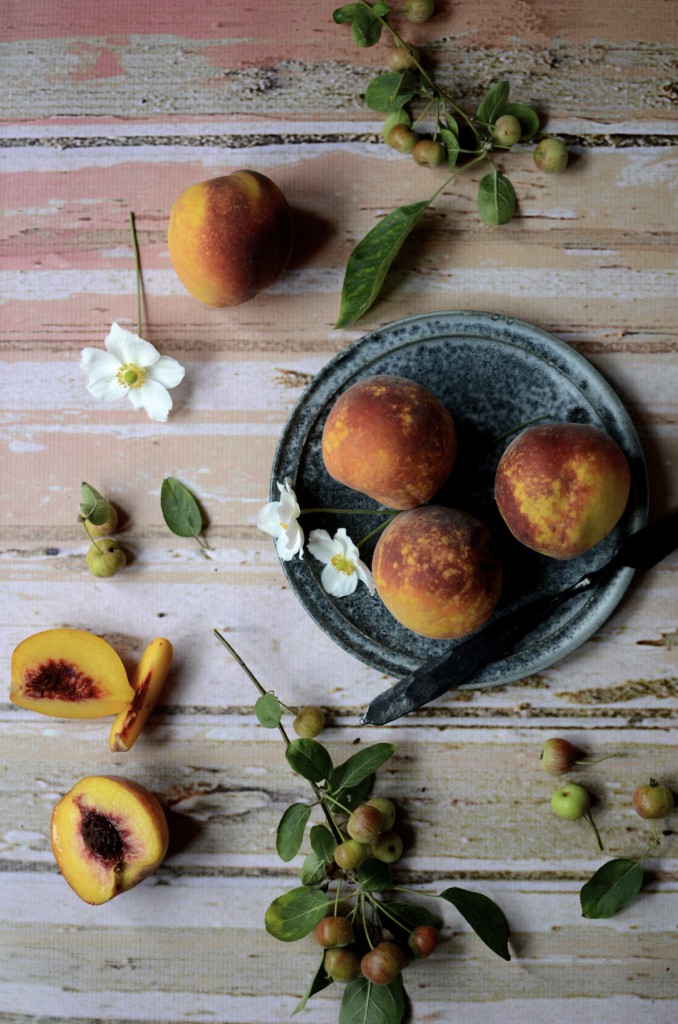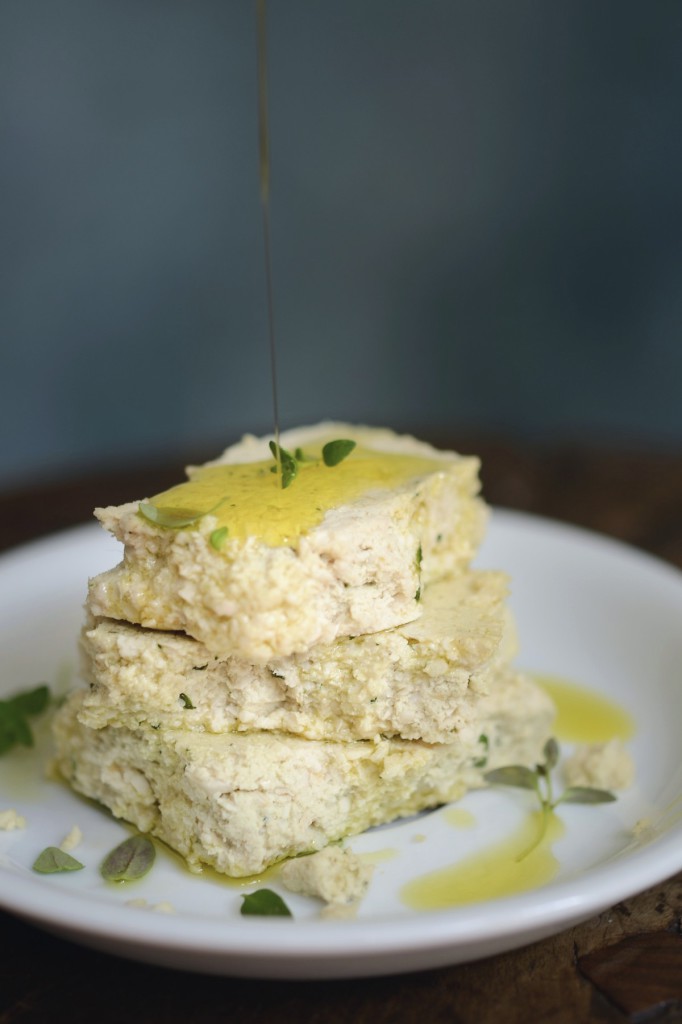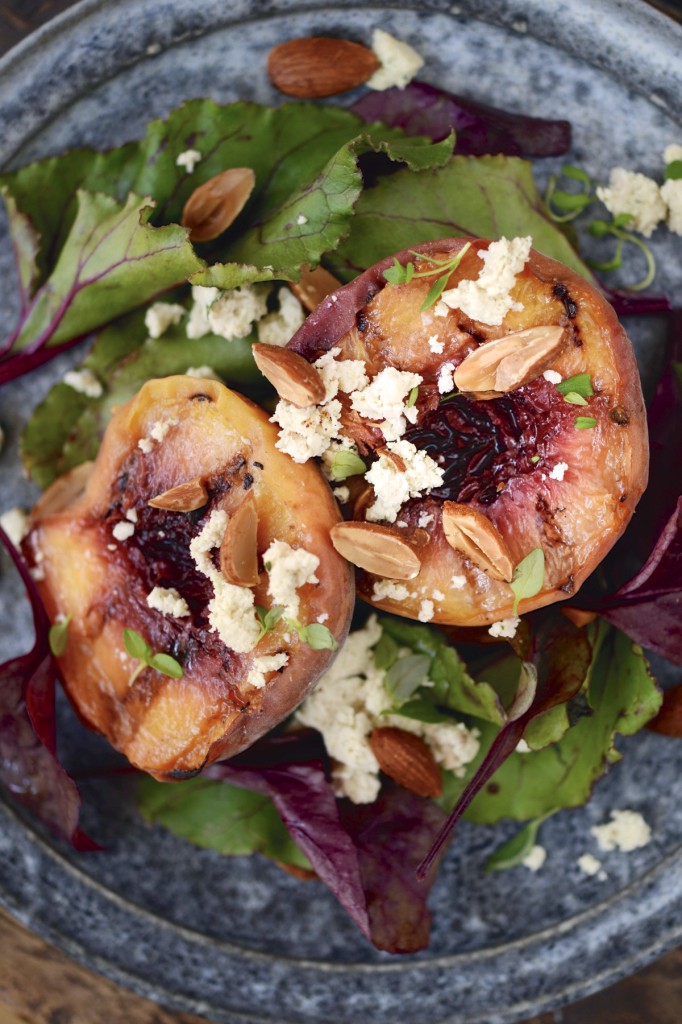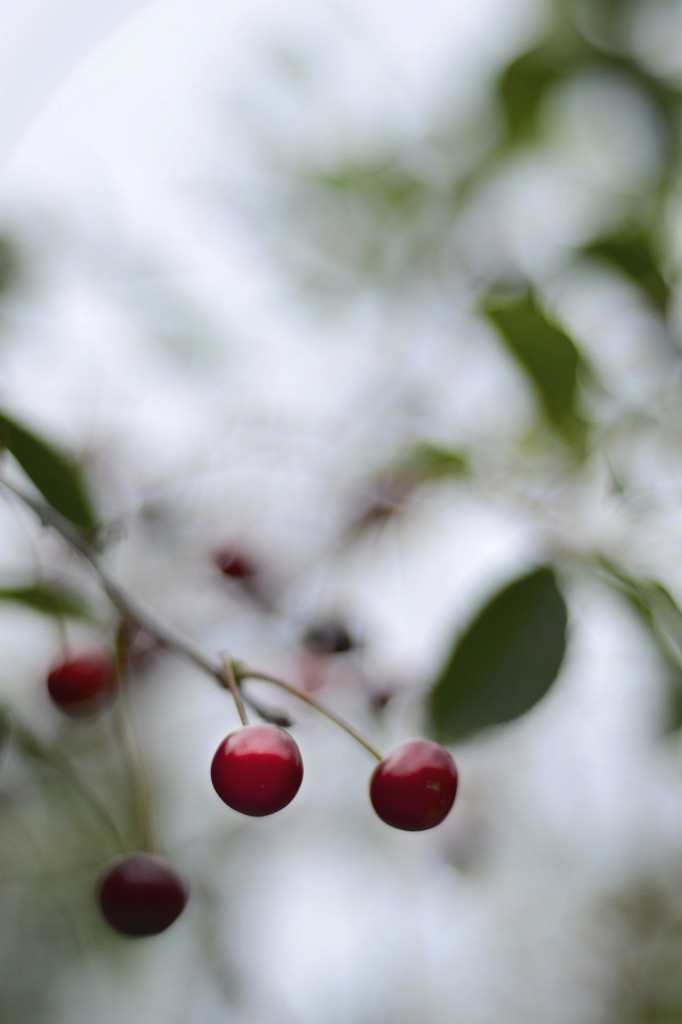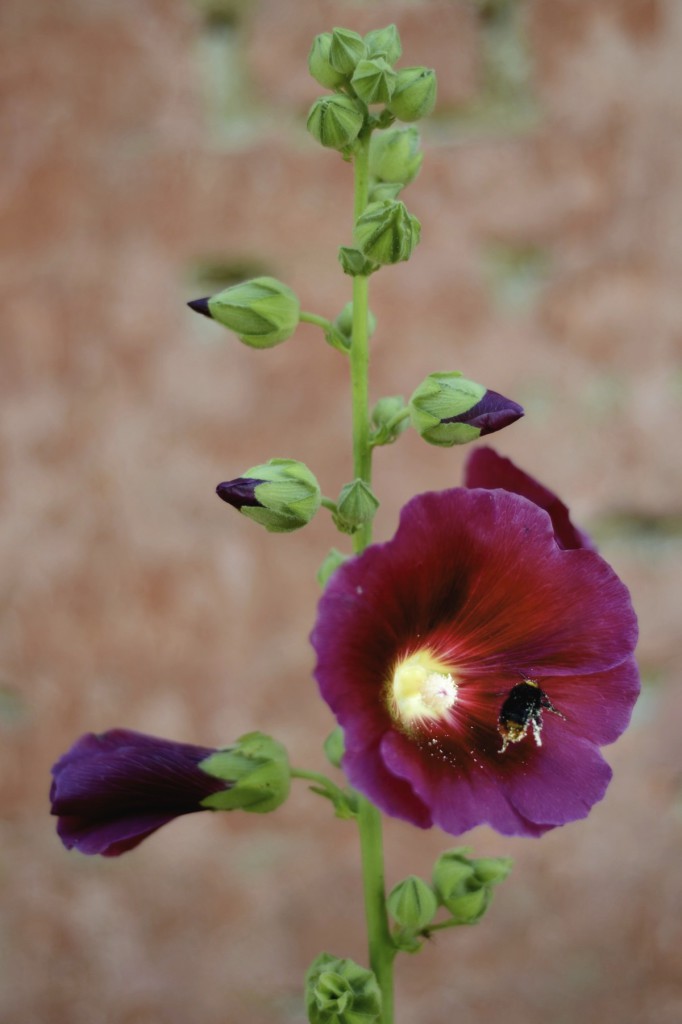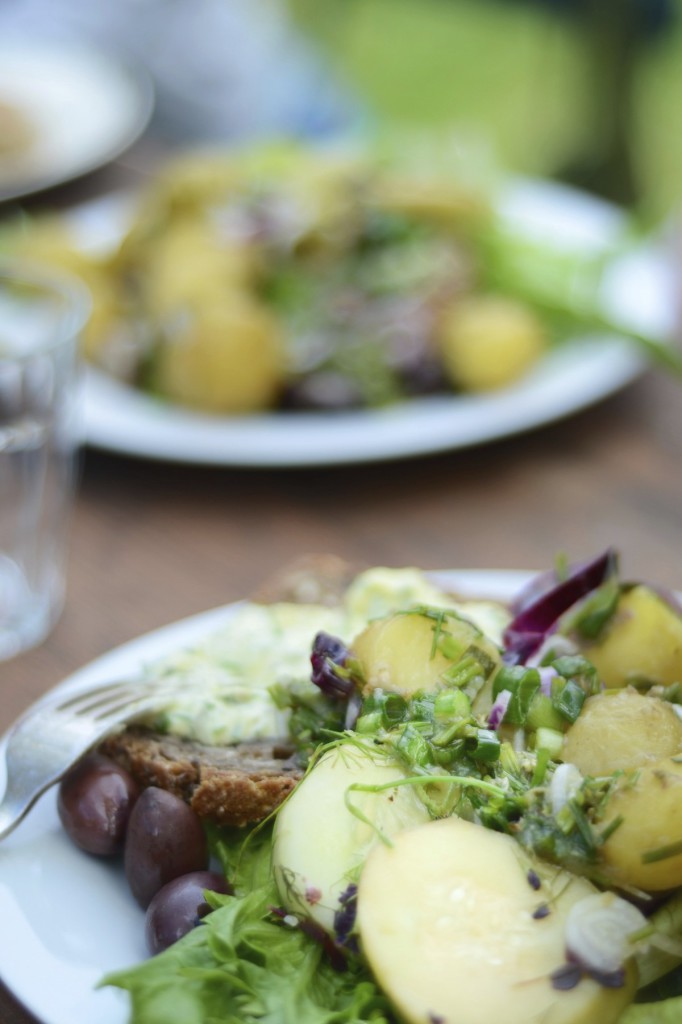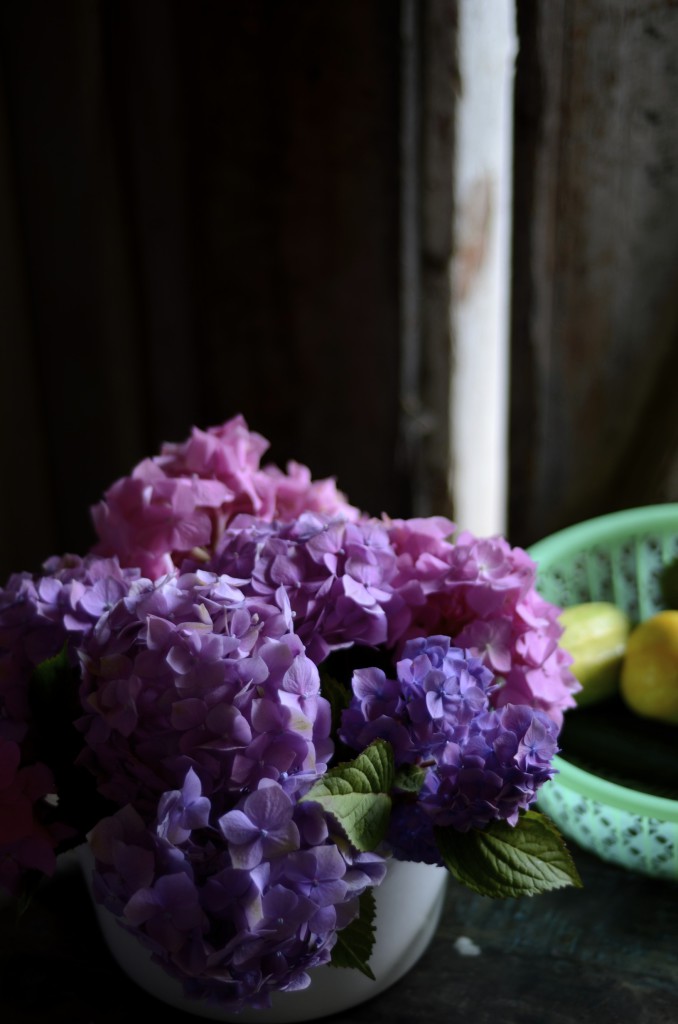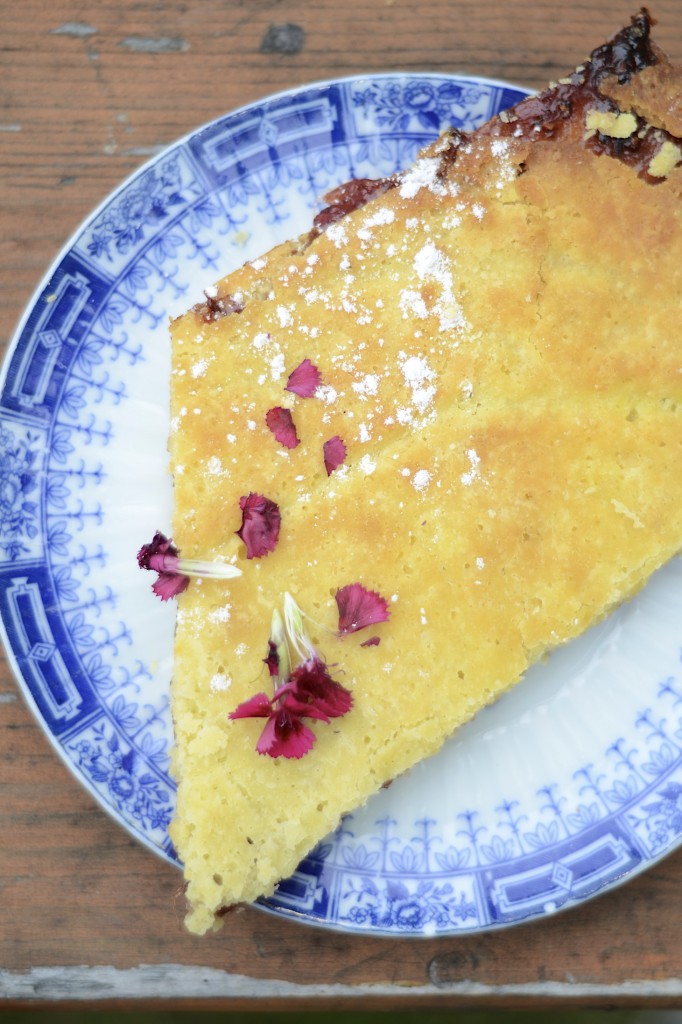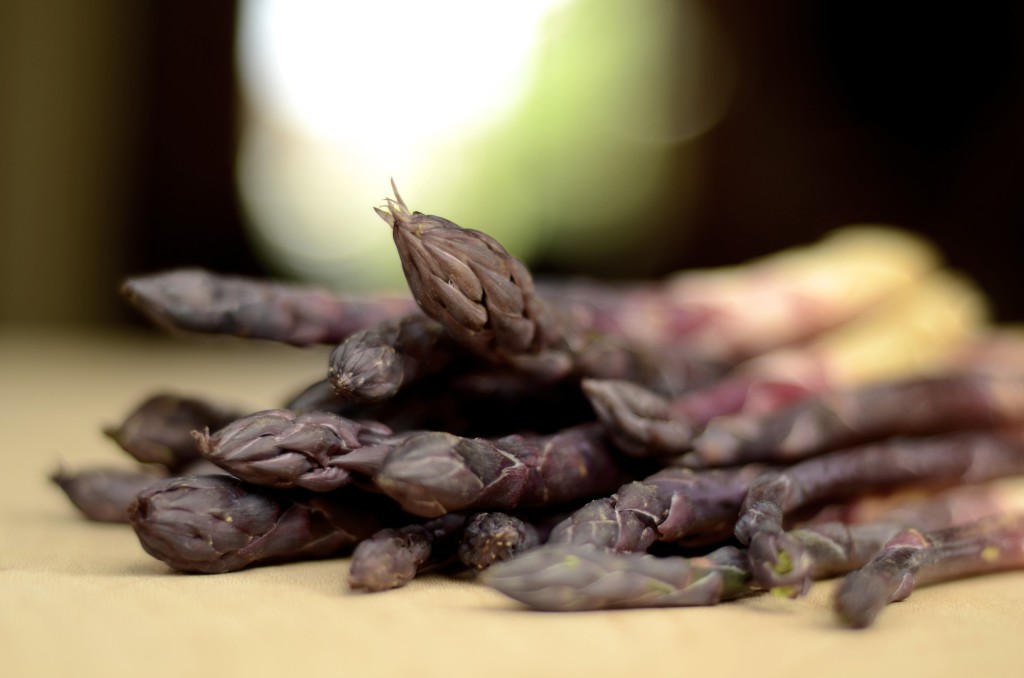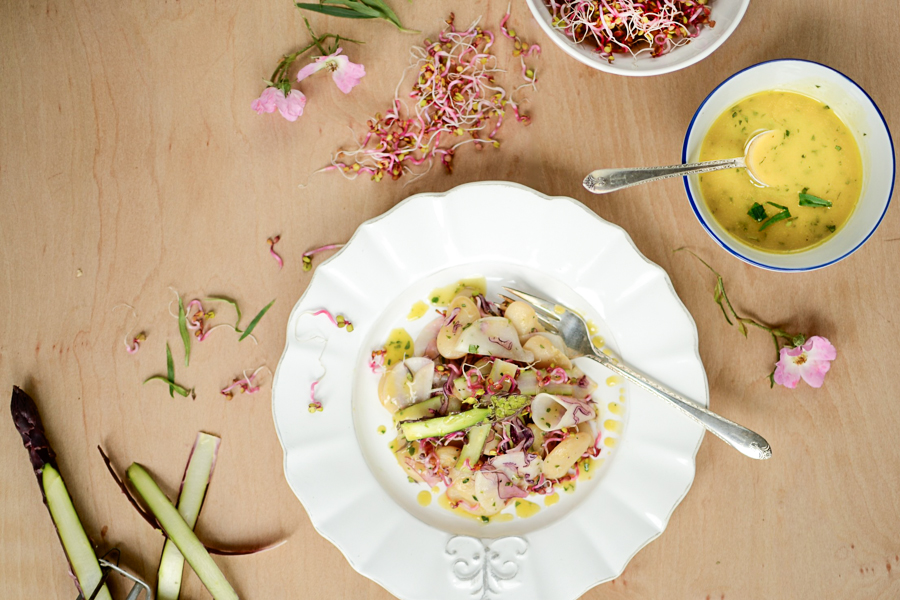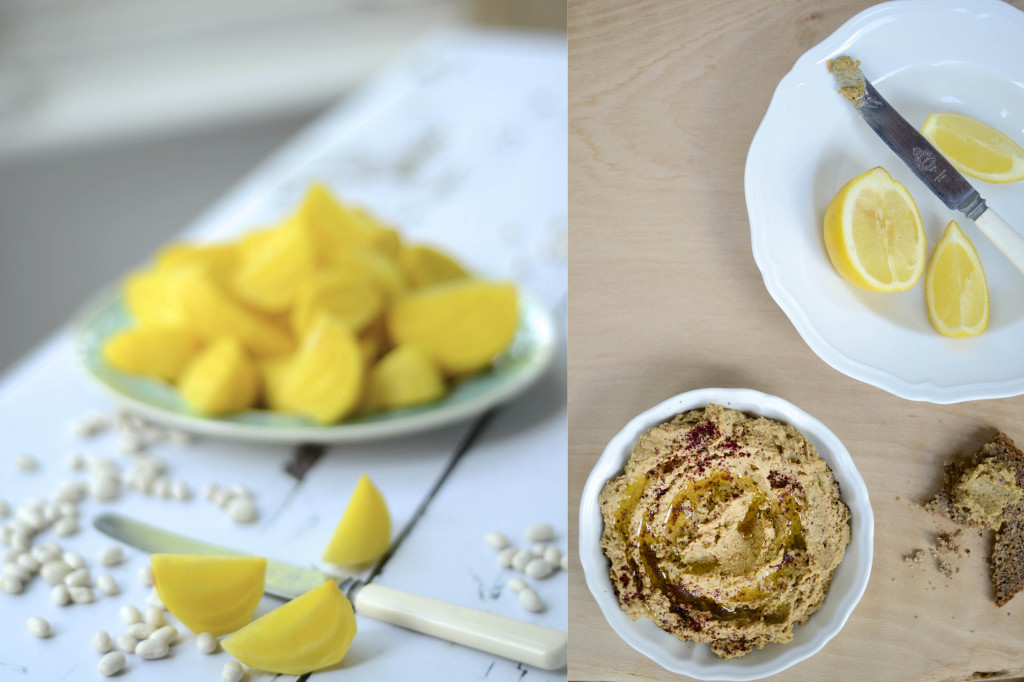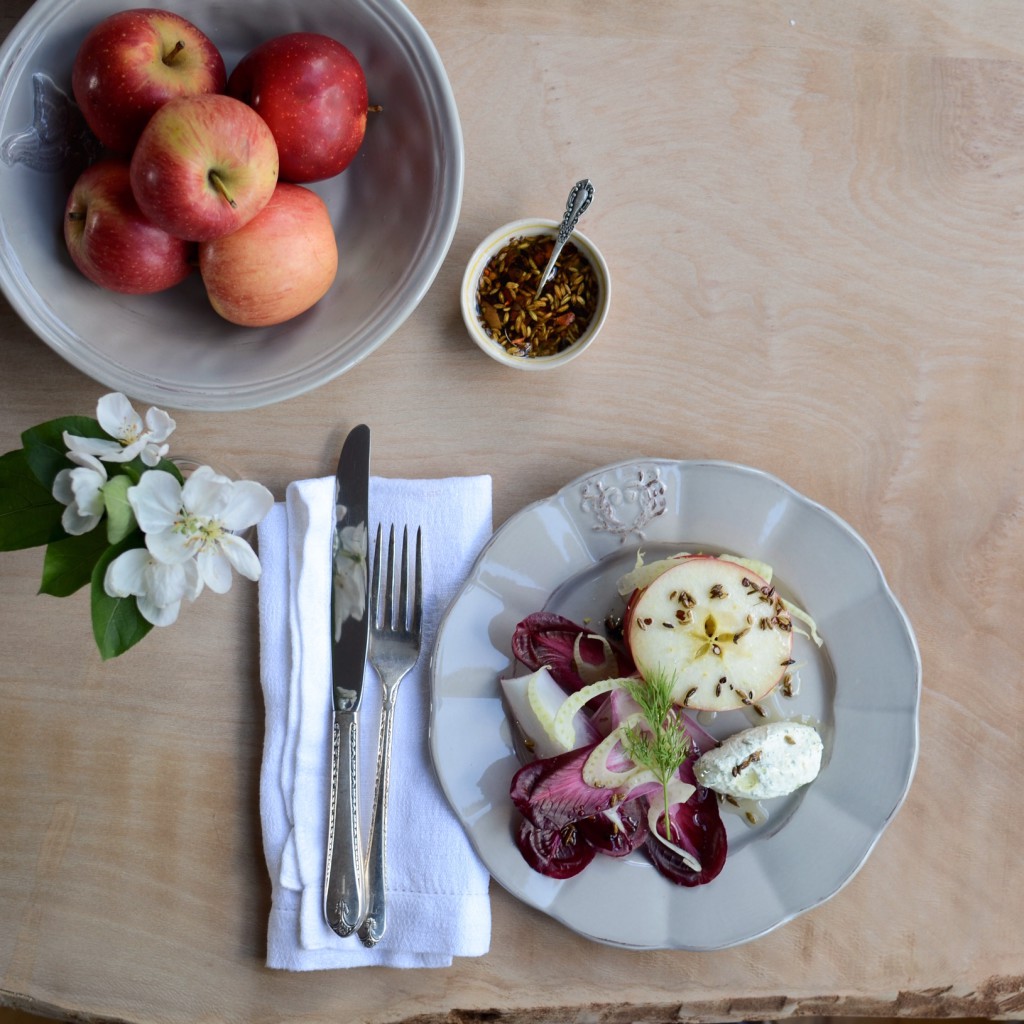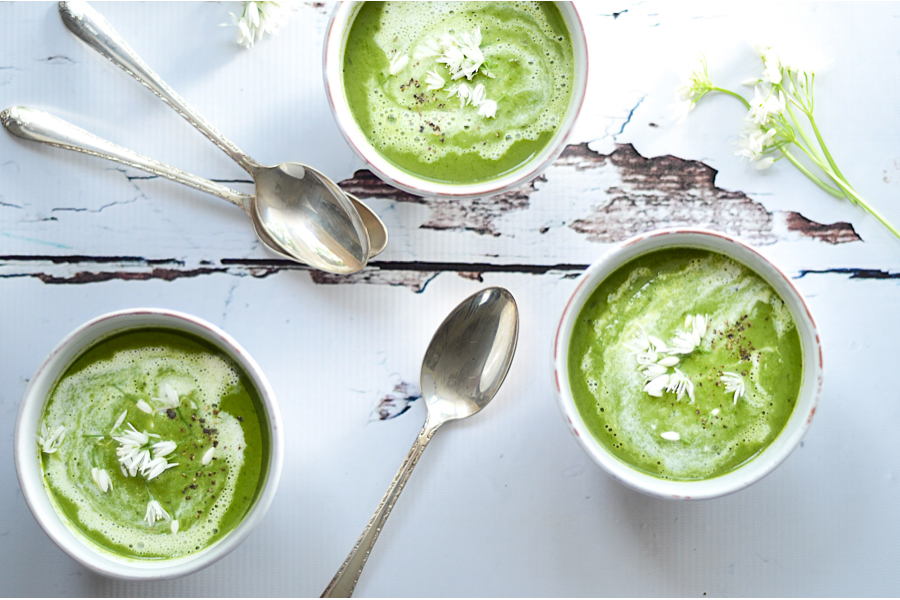Grilled peaches with nut feta
I’ve never really understood why artists always assume it was an apple that tempted Adam and Eve to disobey God. I like apples. I do. But I wouldn’t risk the salvation of all future generations for one. Give me a ripe, juicy peach, however, and I am able to sympathise with their predicament…
As summer draws to a close, we have been indulging in the last of the season’s peaches. One of my favourite ways to enjoy these fleshy fruits, is simply grilled with dressed greens, feta cheese and roasted nuts. We don’t have dairy often, however, so I regularly make nut cheeses. To devoted “cheesies”, these usually taste nothing like real cheese and disappointment ensues. But they are 100% delicious in their own right and not nearly as taxing on the system…
Thyme and macadamia nut feta
Ingredients
1 cup raw macadamia nuts, soaked in filter water for 4 hours
2 teaspoons unpasteurised gluten-free miso paste (like this one from Clearspring)
filter water
Salt
1 tablespoon fresh thyme leaves (if using the hardier type, chop finely)
Method
1. After soaking, rinse the nuts under fresh water, then transfer to a high speed blender with the miso and just enough water to cover.
2. Blend until the nuts are finely ground, but not smooth. You need to retain some texture to make the cheese.
3. Scoop the mixture into a jar, cover with a breathable cover (a muslin square works well) and leave in a warm place for 6 to 12 (at the most) hours.
4. Pour the fermented nut mix into a nut milk bag and drain off any excess liquid. Press the crumbly mixture firmly into a small container lined with greaseproof paper and refrigerate for a few hours to allow it to firm up.
Note: During fermentation, the surface may turn a darker shade. This is completely fine.
Simple peach dressing
Ingredients
1 tablespoon peach (or regular white) balsamic vinegar
squeeze of lemon
2 tablespoons extra virgin olive oil
pinch of salt
knife tip of cayenne pepper
1/4 teaspoon mustard powder
Half a ripe peach, peeled
Method
Place all the ingredients for the dressing in a blender and blend until smooth.
Exploring Fuglebjerggård (and a warm potato salad with garden-fresh greens)
One of the highlights of our summer in Denmark was a visit to Fuglebjerggård, roughly 50km north of Copenhagen. Here we wandered through the gardens and soaked up the sunshine and tranquility, while the children squealed with delight each time they succeeded in scooping a tiny velvety kitten into their arms. Camilla Plum, a renowned Danish cookbook author and TV personality, has been managing Fuglebjerggård as an organic farm since 1996 and the variety of crops grown on the land is astounding.
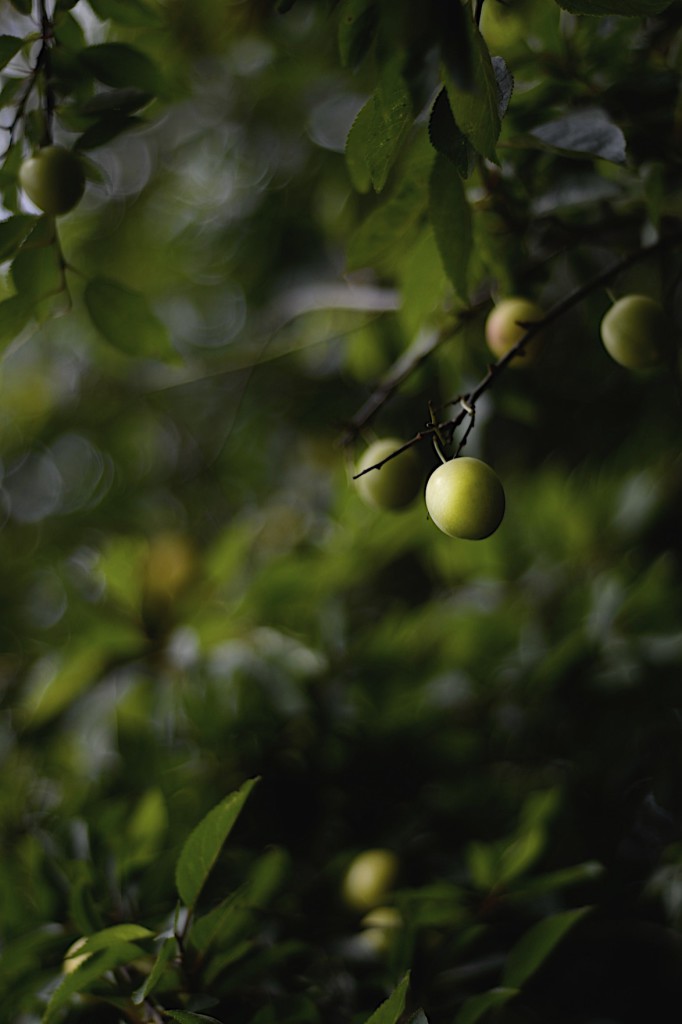
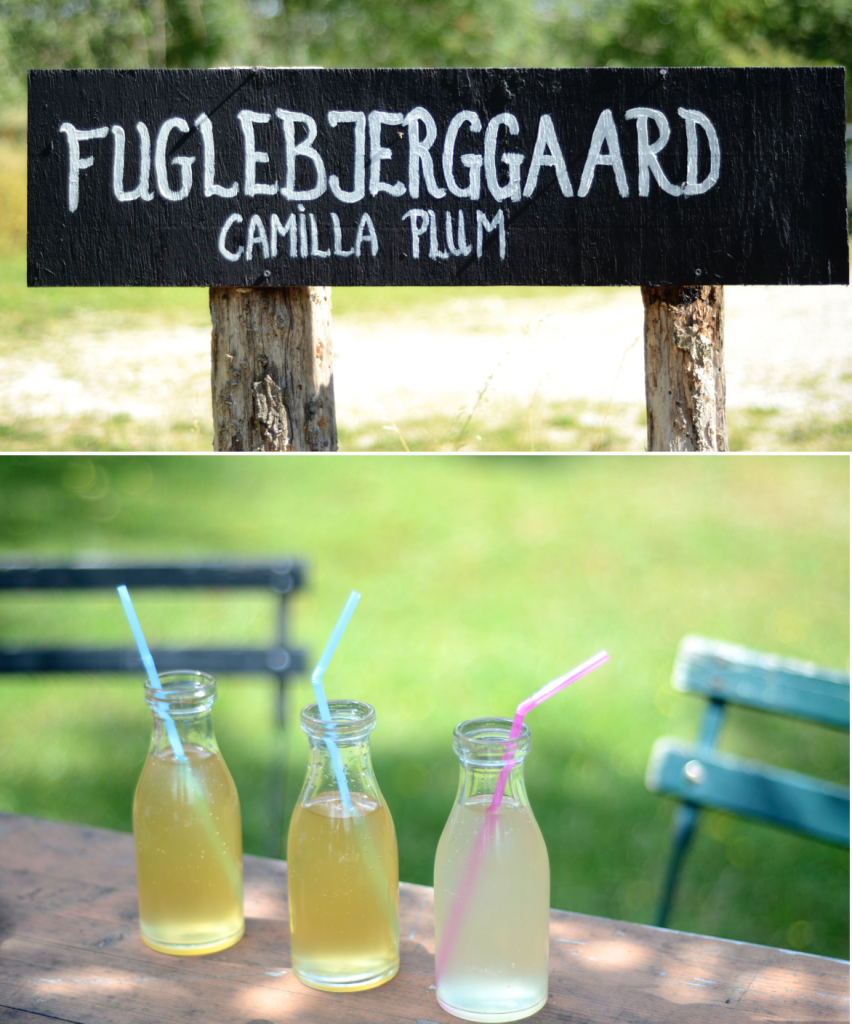
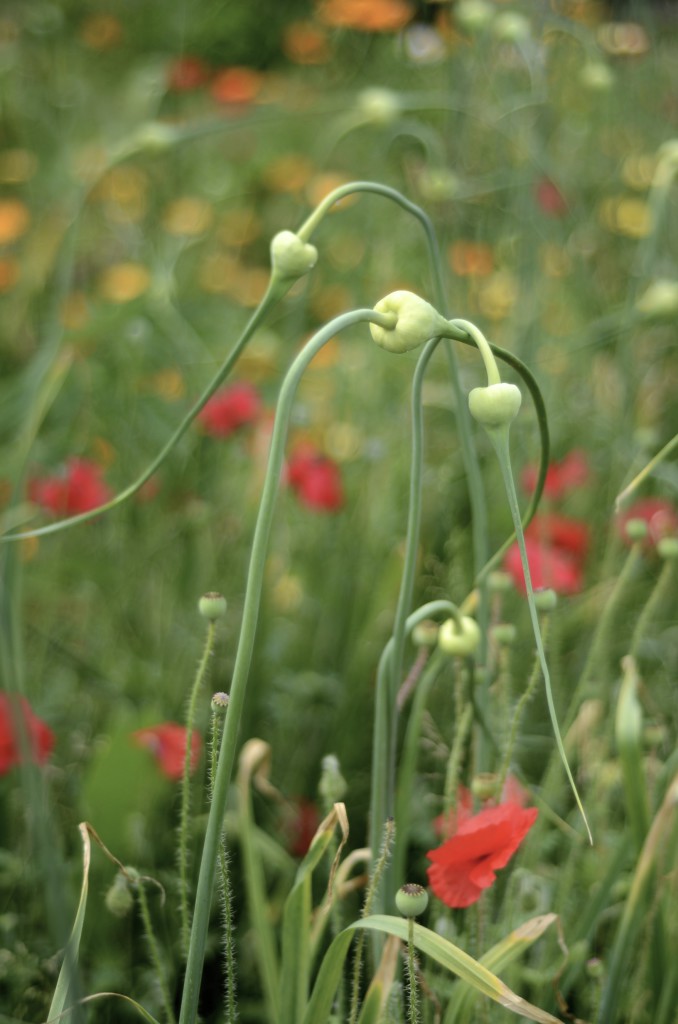
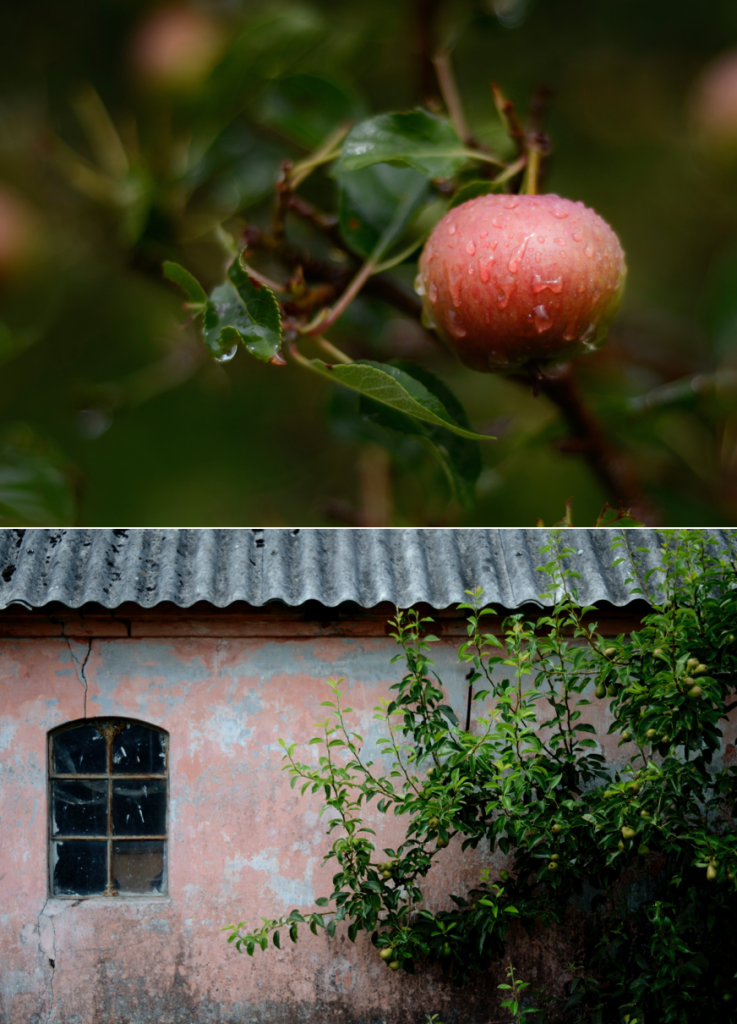 Lunch consisted of new potatoes, freshly picked lettuce, unctuous home-made mayonnaise, pickles and what can only be described as the perfect dressing – a meal that was absolutely delicious in its simplicity. We allowed ourselves a raspberry slice afterwards, each one of us secretly wishing that time could stand still just for a little while.
Lunch consisted of new potatoes, freshly picked lettuce, unctuous home-made mayonnaise, pickles and what can only be described as the perfect dressing – a meal that was absolutely delicious in its simplicity. We allowed ourselves a raspberry slice afterwards, each one of us secretly wishing that time could stand still just for a little while.
Warm potato salad
Ingredients
New potatoes, scrubbed and boiled in their skins and sliced
Fresh green loose leaf lettuce, washed, dried and roughly torn
Kalamata olives
Pickled cucumbers, sliced on the diagonal
For the dressing
125ml / 1/2 cup Extra Virgin Olive oil
45ml / 3 tablespoons lemon juice
1 teaspoon Dijon mustard
3 purple spring onions, washed and finely sliced
1 small bunch dill, washed and chopped
2 tablespoons non-pareille capers, rinsed
Sea salt to taste
Method
1. Arrange the salad ingredients on a plate.
2. Combine the ingredients for the dressing in a glass jar, screw on the lid and shake vigorously.
3. Serve on the potatoes and greens, with a dollop of mayonnaise on the side.
Purple asparagus and butter beans
Both asparagus and tarragon herald the start of spring. Well, in my opinion anyway. But that is not the only thing I like about this (mostly raw) salad. It really gets your digestion going. The spiciness and zest, the crunch and bitterness. Purple asparagus also has diuretic and laxative properties that help flush out toxins from the body and alleviate bloating and cramps.
Most people know that it is a good idea to enjoy raw foods regularly, as they are rich in live enzymes that help your body digest food and assimilate nutrients. But here is one shortcut worth knowing about: sprouts can have up to 100 times more live enzymes than raw fruit and vegetables. Now that’s something to sprout about!
Ingredients for the dressing
1/2 cup / 125ml extra virgin olive oil
1/4 cup / 60ml lemon juice
2 teaspoons raw honey
2 teaspoons cashew nut butter
1 tablespoon finely chopped tarragon
salt to taste
Ingredients per portion of salad
1/3 cup cooked butter beans
1/3 cup shredded red cabbage
10 thin slices daikon radish
1 raw purple asparagus spear, cut into thirds and shaven with a vegetable peeler
1/2 tablespoon China Rose radish sprouts
Method
1. Put all the ingredients for the dressing into a jar, close the lid and shake vigorously. Taste and adjust seasoning if necessary.
2. Combine the rest of the ingredients in a bowl and toss with some dressing.
Note: The radish sprouts are quite spicy, so don’t add too many and perhaps go light on pepper, if you add it. I also prefer an olive oil that is not too peppery or bitter, as there is a lot going on. Also, cooking the beans with some onion, garlic and kelp ensure they taste great.
Golden beet & haricot bean dip
One of the tricks I often rely on to encourage the whole family to eat more vegetables is to offer crudités before the main meal – when everyone is starting to feel really hungry. Another is to incorporate vegetables into as many dishes as often as possible. Here is a recipe that will give you the opportunity to be most cunning and do both!
Ingredients
1/2 cup haricot / cannellini beans, soaked for at least 24 hours in filtered water
2 cloves garlic
1 small onion, peeled and halved
1 bay leaf
Small (2cm or 1”) strip kombu / kelp
500g golden beets, washed and peeled
1 tablespoon coconut oil
5 to 6 sprigs fresh thyme, leaves picked
Sea salt and freshly ground black pepper
2 tablespoons tahini
2 tablespoons extra virgin olive oil
Juice of 1 – 2 lemons, depending on taste
1 teaspoon sumac
Method
- Bring the beans, 1 garlic clove, onion, bay leaf and kombu to boil in a pot with enough salted water to generously cover the beans. Simmer until beans are tender, skimming off any froth that forms on the surface.
- While the beans are cooking, toss the beets in the liquid coconut oil, add the thyme leaves and season with salt and pepper. Roast in a moderately hot oven (160°C / 320°F) for about 40 to 50 minutes, or until the beets are tender.
- When the beans and beets are both tender, add them to the bowl of a food processor, together with the tahini, olive oil, lemon juice, the other clove of garlic and salt and pepper. Use the bean cooking liquid if you need to thin the dip a little.
- Sprinkle over some sumac just before serving.
Fresh cheese with fennel and chilli oil
It couldn’t be any easier than this – get your hands on some pastured full-fat yoghurt and surprise even yourself with the delicious, elegant result after straining it overnight. Here I added it to a simple salad of dressed purple endive and shaved fennel, with apple slices and some cheeky home-made chilli oil.
Ingredients for the cheese
450g thick (Greek) organic yoghurt
1 small bunch fresh dill, minced
Zest of 1 lemon
Sea salt
Ingredients for the oil
1/4 cup / 60ml apple cider vinegar
1 teaspoon dried red chilli flakes
1/4 cup / 60ml extra virgin olive oil
2 teaspoons fennel seeds
Method
- Spoon the yoghurt into a few layers of muslin cloth, tie with a string and strain in the fridge overnight. You can lay a wooden spoon over the bowl and then tie the string to it. I have a long glass jar with a tight lid, under which I secure the cloth.
- Next, heat the apple cider vinegar until hot. Add the chilli flakes and simmer for 10 minutes.
- While the chillies are simmering, dry roast the fennel seeds in a heavy-bottomed saucepan over a medium heat. Be mindful not to burn them.
- Remove the chillies from the heat, drain and spread out on kitchen towel or roll.
- Add the chillies and fennel seeds to a small pot with the olive oil and gently heat.
- Allow to infuse for at least 10 minutes, just below a simmer.
- Turn off the heat and let the oil cool.
- Pour the cooled oil into a sterilised bottle and use within a week.
- Once the cheese is ready, stir in the minced dill, lemon zest and salt.
- Serve this cheese with smoked trout, as a spread on sandwiches or with a spring minestrone.
Wild Garlic and Lettuce Soup
Spring is a time for new beginnings and fresh starts. A season that teases translucent slivers of green from all but the darkest corners. So it is with great joy that I too am breathing life into a new chapter: welcome to the FoodFights journal! And what better way to kick off, than with spring’s darling, wild garlic. Sought after for its leaves, rather than its bulb, wild garlic is delicious in salads and pestos, sautéed or mixed into stuffing. Also known as ramsons, broad-leaved or wood garlic, and bear’s garlic, this wild relative of chives is mostly found in woodlands near bluebells. The tiny white flowers are also edible and oh-so-pretty!
Ingredients
1 large leek, sliced in half length-wise and washed
2 heads romaine lettuce, washed and roughly chopped
150 – 180g wild garlic, roughly chopped and little white flowers reserved
2 medium sweet potatoes, scrubbed clean, cubed and cooked in a little water until tender 2 cups / 500ml fresh chicken stock
small bunch of fresh basil
1/2 cup / 125ml goat’s yoghurt or kefir (optional)
Sea salt and freshly ground black pepper Goat’s milk feta cheese
Method
- Slice leeks into half moons and sauté over gentle heat in a splash of good quality extra virgin olive oil.
- Add the lettuce and wild garlic, and sauté another few minutes until wilted.
- Add sweet potato and stock and bring to gentle simmer for a few minutes.
- Blend in a blender until smooth. Add basil and pulse a few times. Try to
- Stir in the yoghurt or kefir, if using, and garnish with crumbled feta and wild garlic flowers.
Note: It is important not to heat any cooking oil past its “smoke point,” the temperature at which it starts to burn, as this will influence flavour and decrease nutrient content. However, anything more than a gentle heat will damage extra virgin olive oil’s precious phytochemicals and plentiful nutrients that have been preserved by the cold extraction process.

